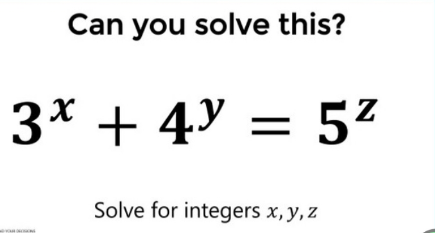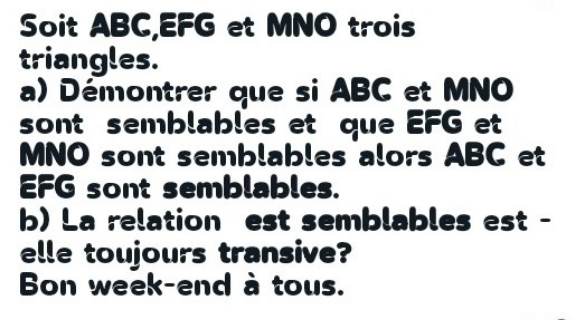
Question and Answers Forum
AllQuestion and Answers: Page 437















Pg 432 Pg 433 Pg 434 Pg 435 Pg 436 Pg 437 Pg 438 Pg 439 Pg 440 Pg 441
|
Question and Answers Forum |
AllQuestion and Answers: Page 437 |

|
| The line 2y=x+3 meets the circle x^2 +y^2 −2x−6y−15 at point M and N where N is in the second quadrant. find the coordinate of M and N. Mastermind |

|

|

|
| solve ((sin (x+18°))/(sin x)) = ((sin 18°)/(sin 12°)) |

|

|

|
| developpement limite de ordre 3 sin^2 x et cos^2 x |
| help please ∫_1 ^∞ ((1/t)−sin^(−1) ((1/t))) dt I can show that it is equal to −Σ_(n≥0) (−1)^n (((2n−1)!)/(4^n (n!)^2 (2n+1))) but I cant calculate it... |
| Is a semicircle a sector or a segment? |
| if cos^2 ∝ + 3cosec^2 θ = 7, find the expression of tan^2 θ, Hence show that tanθ=1. Mastermind |

|
| find the general solution of 1)y′′′−7y′+6y=x 2)y′′′−3y′′+2y′=(e^x /(1+e^(−x) )) |

|

|

|

|

|
| A number with two digits is equal to four times the sum of its digits. The number formed by reversing the order of the digit is 27 greater than the given number. Find the number |

|
| Is mass of a body greatest at the poles?. If yes or no, reason please? With diagram if possible. thanks |
| ∫ (1/( ((1+x^4 ))^(1/4) ))dx |
| find the total charge enclosed inside a volume of 1.5×10^(−9) located at the origin if D=e^(−x) sin(y)a_x ^ −(e^(−x) cos(y))a_y ^ +2za^ z C/m^2 |

|
Pg 432 Pg 433 Pg 434 Pg 435 Pg 436 Pg 437 Pg 438 Pg 439 Pg 440 Pg 441 |